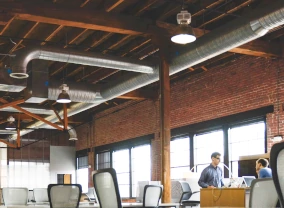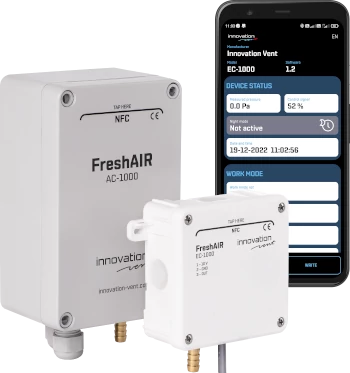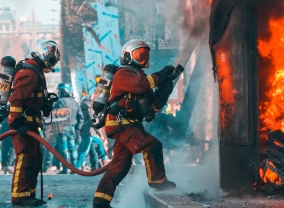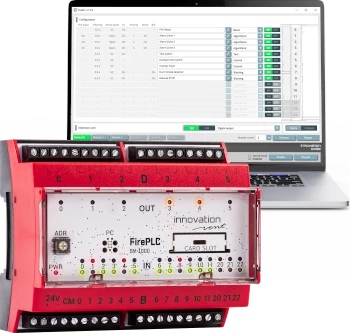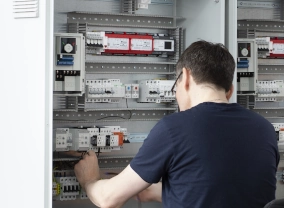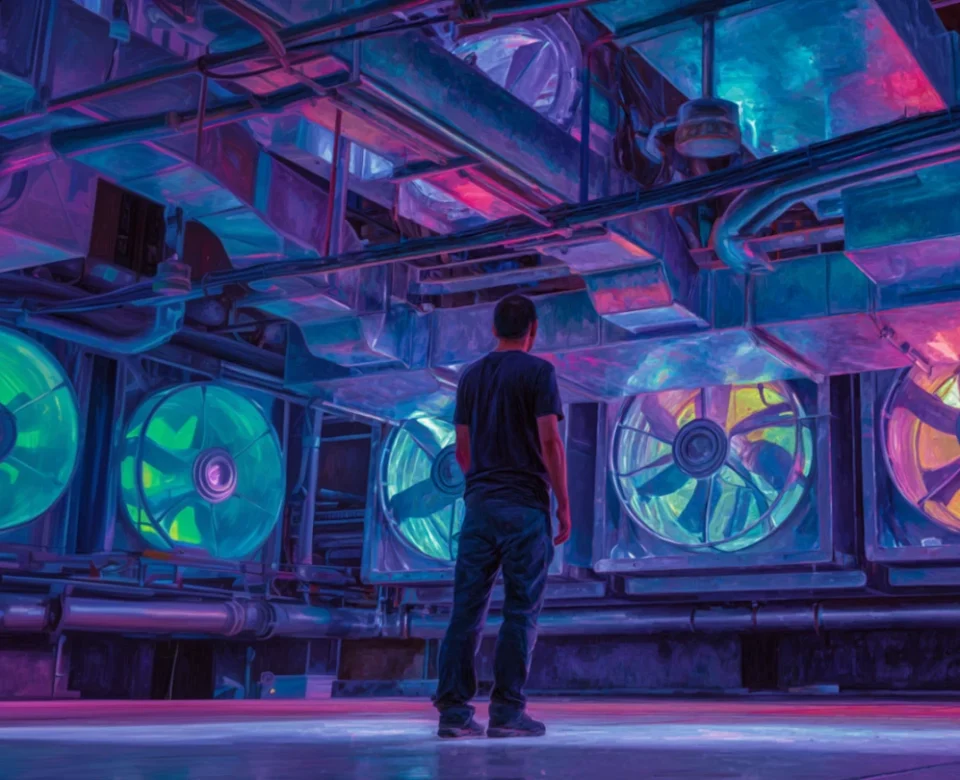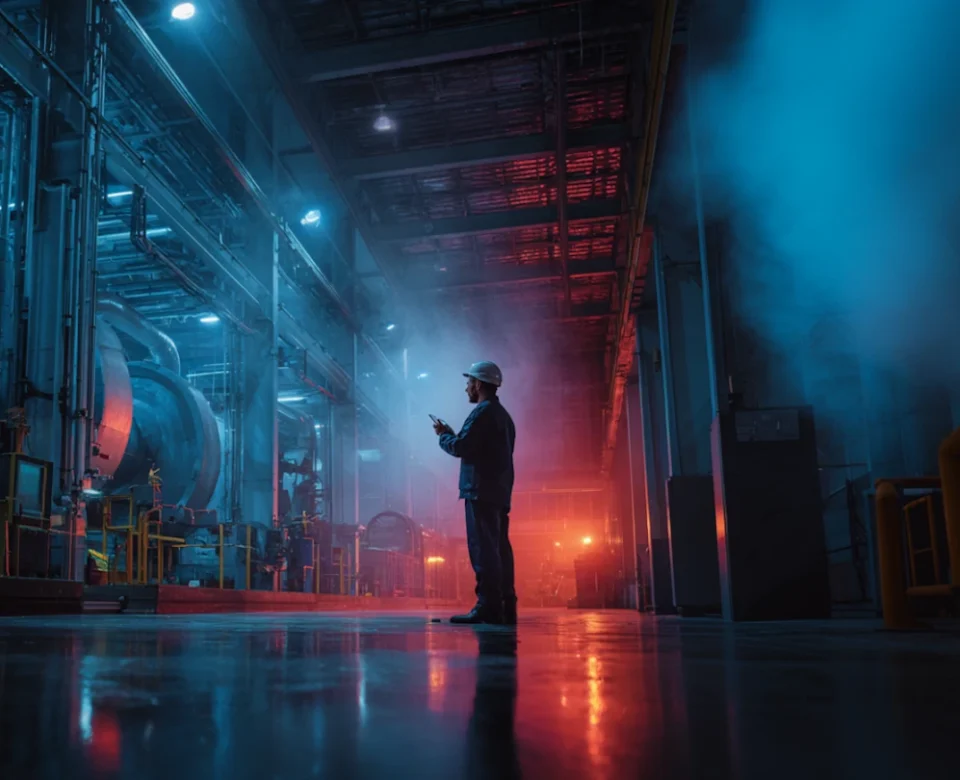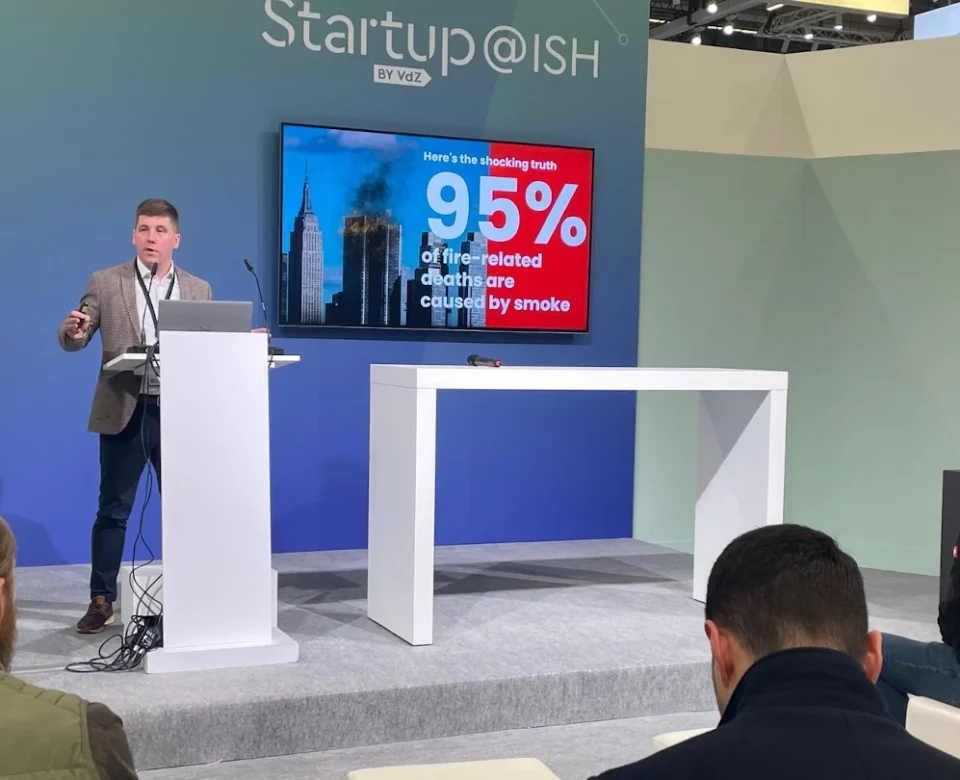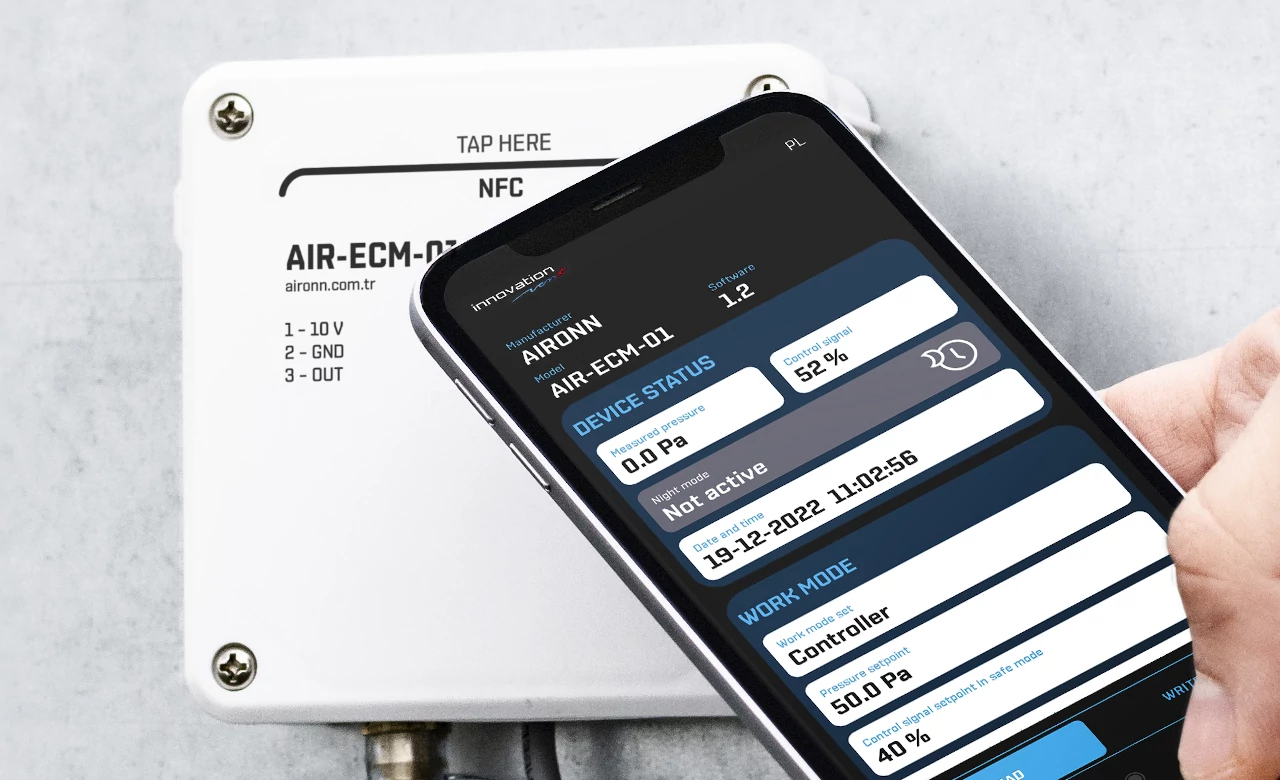
We are entering the market in Turkey
2023-06-21In the world of fire safety, smoke is often the silent killer. It can spread quickly, obscure visibility, and pose severe health risks. This is where smoke extraction and pressurization systems come into play, forming a crucial line of defense in modern building safety. Innovation Vent, a leader in fire protection technology, has been at the forefront of developing these life-saving systems. This article dives deep into the world of smoke control, exploring how these systems work, their key components, and the latest advancements in the field.
What you will learn:
- Detailed understanding of how smoke extraction and pressurization systems function
- Cutting-edge innovations and real-world applications
- Advanced features of modern smoke control units

The critical role of smoke control in building safety
Smoke control systems are more than just fans and vents. They're complex networks designed to manage airflow during a fire emergency, with a primary focus on keeping evacuation routes clear of smoke. Here's how they work:
- Detection: Smoke detectors or heat sensors identify the presence of smoke or fire.
- Activation: The system springs into action, either automatically or manually.
- Pressurization: The core SmokeESC system prevents smoke from entering evacuation routes by creating positive pressure in these areas.
- Extraction: Where necessary, powerful fans draw smoke out of the building through strategically placed vents.
- Fresh Air Intake: As smoke is controlled or removed, fresh air is drawn in to maintain pressurization and create a livable environment.
Innovation Vent's systems go a step further. They use a smart ThraceTM algorithm to maintain stable pressure values, ensuring more effective smoke control and potentially saving more lives.
Understanding smoke control panels: function and features
At the heart of every smoke control system is the control panel. Think of it as the system's brain. Innovation Vent's control units, integrated into mechanical smoke extraction panels, are packed with features:
- Real-time Monitoring: Constant surveillance of smoke levels, pressure differentials, and system performance.
- Versatility: Adaptable to any building type or system configuration.
- Integration: Seamless communication with fire alarms, sprinklers, and building management systems.
- User Interface: Touchscreen displays for easy operation and status checks.
- Remote Access: Control and monitoring from off-site locations.
- Fail-safe Mechanisms: Backup power and redundant controls for reliability.
These advanced panels ensure that the smoke control system responds swiftly and effectively in an emergency, focusing on maintaining safe evacuation routes.
Innovations in smoke extraction systems
The field of smoke control is constantly evolving. Innovation Vent is leading the charge with cutting-edge technologies:
- Adaptive Pressurization Systems: These systems use real-time data to adjust pressurization strategies on the fly, ensuring optimal performance under varying conditions.
- Energy-Efficient Designs: High-performance devices that use less power without sacrificing effectiveness.
- Smart Sensors: Advanced sensors that can detect the slightest changes in pressure levels.
- Intelligent Airflow Management: Innovative designs that guide airflow along specific paths for more efficient smoke control and pressurization.
These innovations not only improve performance but also reduce long-term costs and environmental impact.
Case studies: successful implementation of smoke control systems
Let's look at a few hypothetical cases where smoke control solutions made a difference:
- High-Rise Office Building: A 50-story tower implemented a zoned pressurization system. During a fire on the 30th floor, the system maintained clear, smoke-free stairwells, allowing for a smooth evacuation.
- Shopping Mall: A multi-level mall used a combination of atrium smoke extraction and stairwell pressurization. During a fire, the system kept all evacuation routes clear of smoke, potentially saving dozens of lives.
- Large Warehouse: A 100,000 square foot distribution center installed a roof-based extraction system. When a forklift caught fire, the system quickly removed smoke, preventing inventory damage and allowing firefighters to locate and extinguish the fire rapidly.
These cases show how versatile and effective modern smoke control systems can be across various building types, with a focus on maintaining safe evacuation routes.
Regulatory landscape: compliance and best practices
Navigating the complex world of fire safety regulations can be challenging. Key standards include:
- NFPA 92: Standard for Smoke Control Systems
- NFPA 204: Standard for Smoke and Heat Venting
- EN 12101: Smoke and heat control systems
- International Building Code (IBC) Chapter 9: Fire Protection and Life Safety Systems
Innovation Vent designs its systems to meet or exceed these standards. They also offer:
- Customizable Solutions: Systems that can be tailored to meet specific local codes and building requirements.
- Documentation Support: Comprehensive product documentation to help with permit applications and inspections.
- Regular Updates: Continuous system improvements to stay ahead of evolving regulations.
Staying compliant isn't just about following rules—it's about providing the best possible protection for building occupants.
SmokeESC: a closer look at advanced pressurization solutions
Innovation Vent's SmokeESC pressurization system is the culmination of years of research and development. Key features include:
- Precise Pressure Control: Maintains optimal pressure differentials to prevent smoke infiltration into escape routes.
- Modular Design: Easily expandable to grow with building needs.
- Multi-language Support: Interface available in multiple languages for global use.
- Data Logging: Detailed event recording for post-incident analysis and system optimization.
- Simulation Mode: Allows for system testing without activating all components.
- Energy Management: Smart power usage to reduce operational costs.
These systems represent the pinnacle of smoke control technology, offering unparalleled performance in maintaining safe evacuation routes.
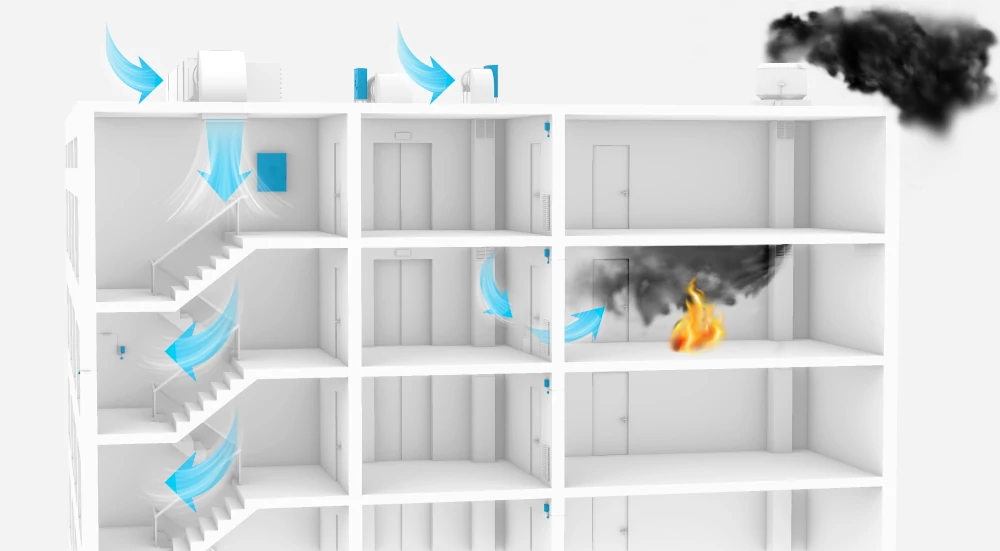
Key criteria for effective pressurization
Two critical factors determine the effectiveness of a pressurization system:
- Maximum Force on Closed Doors: The system must maintain a pressure differential that prevents smoke infiltration without making doors too difficult to open. The force required to open a door should be low enough for a child to manage easily.
- Airflow Through Open Doors: When doors are opened, the system must generate sufficient airflow to prevent smoke from entering the protected space. This "air barrier" is crucial for maintaining a safe evacuation route.
Innovation Vent's systems are designed to optimize both of these factors, ensuring maximum safety without compromising ease of egress.
Future trends in smoke extraction systems
The future of smoke control looks promising. Emerging trends include:
- IoT Integration: Systems that communicate with smart building components for holistic safety management.
- AI-driven Predictive Systems: Using machine learning to anticipate fire scenarios and pre-emptively adjust systems.
- Augmented Reality Interfaces: For easier system maintenance and firefighter orientation during emergencies.
- Green Technologies: More eco-friendly materials and energy-efficient designs.
Innovation Vent is actively researching and developing in these areas, staying ahead of the curve in smoke management technology.
Summary
Smoke extraction and pressurization systems are vital components of modern fire safety strategies. Through innovative design, advanced control systems, and integration with other building safety features, these systems save lives by maintaining clear evacuation routes. Innovation Vent's commitment to pushing the boundaries of this technology, particularly with their SmokeESC system, ensures that buildings are better prepared than ever to handle fire emergencies.
As we look to the future, the continued evolution of smoke management promises even safer, more efficient, and more intelligent systems. By staying informed about these advancements and implementing state-of-the-art solutions, building owners and managers can provide the highest level of protection for occupants and assets alike, with a clear focus on maintaining safe, smoke-free evacuation routes.
